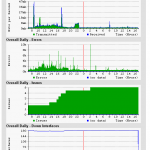760 AREA CODE
Who Will be Affected? All customers with a 760 number will have to change the way they dial. The new 442 area code will serve new customers in the same geographic region as the current 760 area code, which extends from Bridgeport in the north, south to the Mexican border, Camp Pendleton on the west, and east to the state line.
What Will be the New Dialing Procedure? To complete calls from a landline phone, the new dialing procedure requires callers to dial 1 + area code + telephone number. This means that all calls in the 760 area code that are currently dialed with seven digits will need to be dialed using 1+ area code + telephone number.
When Will the Change Begin? Beginning May 2, 2009 … you should begin using the new dialing procedure whenever you place a call from the 760 area code. If you forget and use the old dialing procedure of dialing just seven digits, your call will still be completed.
Beginning October 24, 2009 … you must use the new dialing procedure for all calls. If you do not use the new dialing procedure, your call will not be completed, and a recording will instruct you to hang up and dial again.
Beginning November 21, 2009… new telephone lines or services may be assigned numbers with the 442 area code.
What Will You Need to Do? In addition to changing your dialing procedure, all services, automatic dialing equipment, or other types of equipment that are programmed with a 7-digit telephone number will need to be reprogrammed to use the new dialing procedure. Some examples are life safety systems, fax machines, Internet dial-up numbers, alarm and security systems, gates, speed dialers, mobile phone contact lists, call forwarding settings, voicemail services, and similar functions. Be sure to check your business stationery, advertising materials, personal checks, and your personal or pet ID tags to ensure the area code is included.
What Will Remain the Same?
· Your telephone number, including current area code, will not change.
· What is a local call now will remain a local call regardless of the number of digits dialed.
· The price of a call, coverage area, or other rates and services will not change due to the overlay.
· You can still dial just three digits to reach 911, as well as 211, 311, 411, 511, 611, 711 and 811.
Who May You Contact with Questions?
contact support@drvoip.com for assistance in programming any changes to your ShoreTel phone system!



